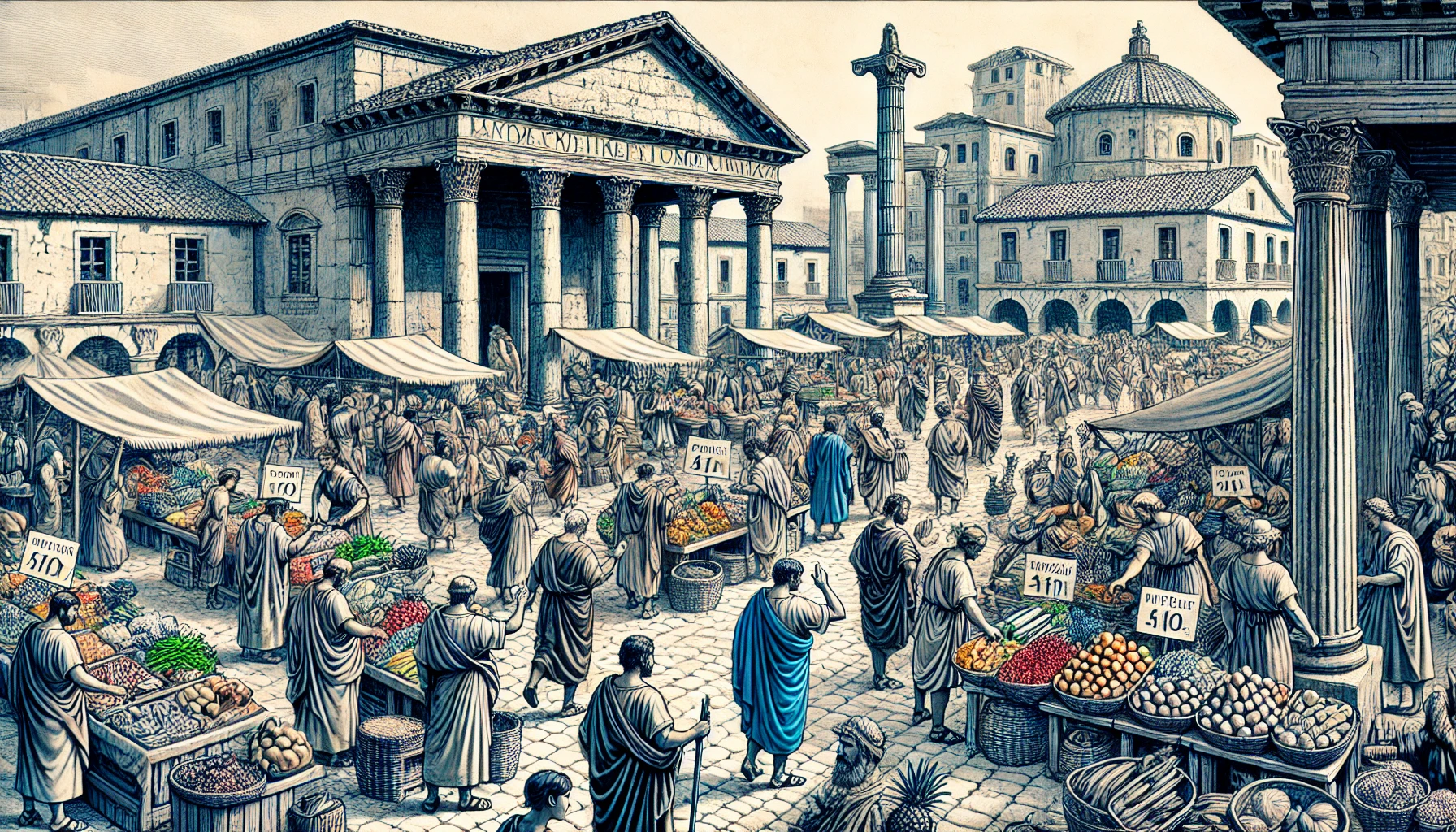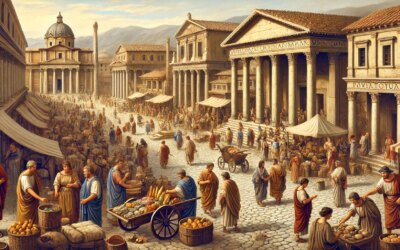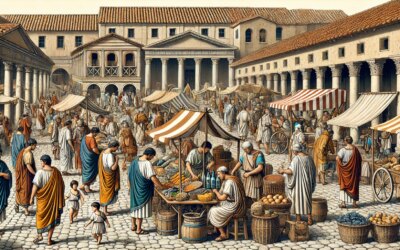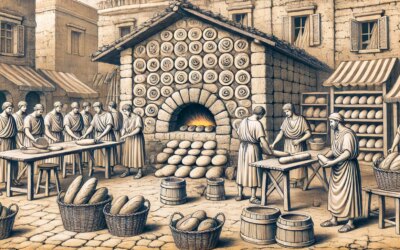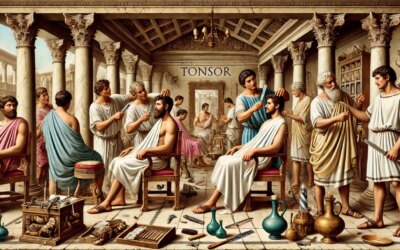The Heartbeat of a City
Amid the towering columns and marble statues of the Roman Forum, a chorus of shouts fills the air. Merchants call out prices in loud, rhythmic chants. Buyers haggle over fresh figs, jars of garum, bolts of dyed fabric, and clay amphorae filled with olive oil. In the 1st century AD, the forum marketplace was not merely a center of commerce—it was the stage on which Roman daily life unfolded.
The Forum as Economic Engine
The Forum Romanum—the civic heart of Rome—was flanked by basilicas, temples, and administrative buildings, but it was also a thriving marketplace. Here, citizens could purchase food, household items, clothes, and luxury imports. Similar forums existed in provincial cities, echoing the model of Rome and enabling economic integration across the empire.
The market served all social classes: patricians browsing silks from the East, plebeians seeking fresh produce, slaves running errands for their masters. The hum of voices, the scent of spices and sweat, and the clatter of carts on stone formed the sensory experience of the Roman forum.
Merchants and Goods
Market stalls, or tabernae, lined the edges of the forum and nearby arcades. Some were permanent shops; others were temporary stalls set up daily. Merchants offered a stunning range of goods:
- Fruits and vegetables: figs, dates, apples, onions, cabbages, and herbs
- Grain and bread: essentials for every Roman diet
- Meat and fish: displayed on marble counters, often with strong aromas
- Wine and oil: stored in amphorae, sold by volume
- Clothing and textiles: tunics, togas, and fabrics dyed in Tyrian purple
- Ceramics and metalware: plates, lamps, and tools for daily use
Foreign imports came from across the empire—pepper from India, glassware from Alexandria, and wool from Britannia—showcasing Rome’s far-reaching influence.
The Art of the Deal
Haggling was expected. Prices were fluid, influenced by supply, demand, and the buyer’s appearance. Wealthy customers might be charged more, while shrewd shoppers could strike better deals. Bartering was common, especially among lower classes, and shopkeepers often threw in small extras to close a sale.
Trust was essential. Reputable merchants developed followings, while frauds faced ridicule, legal action, or worse. The satirist Juvenal often mocked dishonest traders, reflecting the public’s awareness of market dynamics and trickery.
Social Exchange and Public Life
The Roman forum was also a place of social interaction. Politicians gave speeches, clients met patrons, and philosophers debated ethics at the edge of the stalls. Markets were entwined with ritual and religion: shrines dotted the forum, and festivals like the Saturnalia transformed it into a scene of revelry and gift-giving.
Women, though excluded from voting, participated actively in the market. They shopped, managed household budgets, and occasionally ran stalls. Children tagged along, absorbing the rhythms of Roman life.
Market Regulation and Oversight
The Roman state took its markets seriously. Aediles—magistrates responsible for urban management—regulated weights, measures, and cleanliness. Scales were inspected, and fraudulent vendors punished. Price controls were occasionally imposed during shortages, especially for grain.
Vespasian, as emperor, famously taxed public urinals in forums, demonstrating the state’s involvement in even mundane transactions. Laws protected consumers, including slaves and foreigners, affirming the centrality of trade to Roman civic life.
The Architecture of Commerce
Architectural innovations made commerce more efficient. The Tabularium stored records of debts and sales; basilicas provided covered space for stalls and legal arbitration. Porticoes offered shade and shelter. The later Forum of Trajan included a multi-level market hall—Trajan’s Market—considered one of the world’s first shopping malls.
Urban planners prioritized market accessibility, ensuring that even crowded cities maintained efficient, hygienic, and organized forums.
The Market Beyond Rome
Roman forums in provincial cities followed similar blueprints. From Timgad in Africa to Trier in Germania, forums served as economic, administrative, and cultural nexuses. Local goods mixed with imperial imports, sustaining both commerce and Roman identity.
Markets helped unify the empire—not just materially, but ideologically. By sharing goods, customs, and conversation, citizens from diverse backgrounds felt part of a larger Roman story.
The Enduring Marketplace
Though the Roman Empire eventually fell, its model of the forum marketplace influenced medieval fairs, Renaissance piazzas, and modern urban planning. The fusion of commerce, conversation, and community remains a hallmark of city life worldwide.
To walk through a Roman market in the 1st century AD was to experience the empire in miniature—a microcosm of its wealth, challenges, and extraordinary human energy.

